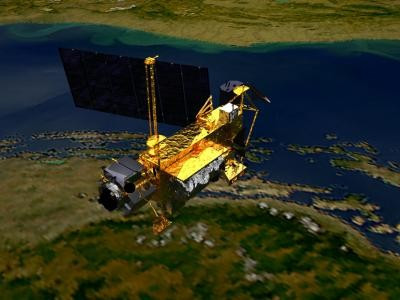Will We Ever Know Where NASA Satellite Really Fell?

One thing is for sure. A dead NASA climate satellite fell back to Earth early Saturday morning, but NASA seem to have no idea where. Can NASA really have lost a satellite?
The Upper Atmospheric Research Satellite re-entered the Earth's atmosphere Friday evening, most likely within 20 minutes of 12:16 a.m. EDT (0416 GMT) Saturday, Nick Johnson, chief orbital debris scientist at NASA's Johnson Space Center in Houston, said at a news briefing the next morning. At that time, it would have fallen into the Pacific Ocean, well off the coast of North America, he added.
The most likely answer is that the satellite is now somewhere on the Pacific Ocean's floor but nobody seems to know exactly where. The fiery re-entry would have scattered debris across the Pacific.
Why can't NASA pinpoint where the pieces fell to earth?
"This is a completely different situation than an incoming ballistic missile," said Johnson. "We may never know."
The agency said the 35-foot satellite fell sometime between 11:23 p.m. EDT Friday and 1:09 a.m. EDT Saturday, but with no precise time or location.
There was rampant speculation on the Internet and Twitter, much of it focusing on unconfirmed reports and even video of debris from the UARS over Alberta, Canada. Many meteorites fall daily, and objects vastly larger than UARS could easily arrive on any given day.
The mystery surrounding the satellite will continue to intrigue people, but NASA's failure to keep track of it is not reassuring.
Those who enjoyed the drama can look forward to the middle of November, plus or minus five weeks, when the German space agency says its defunct ROSAT X-ray telescope will fall to Earth. Let's hope somebody tracks this one.
© Copyright IBTimes 2025. All rights reserved.





















